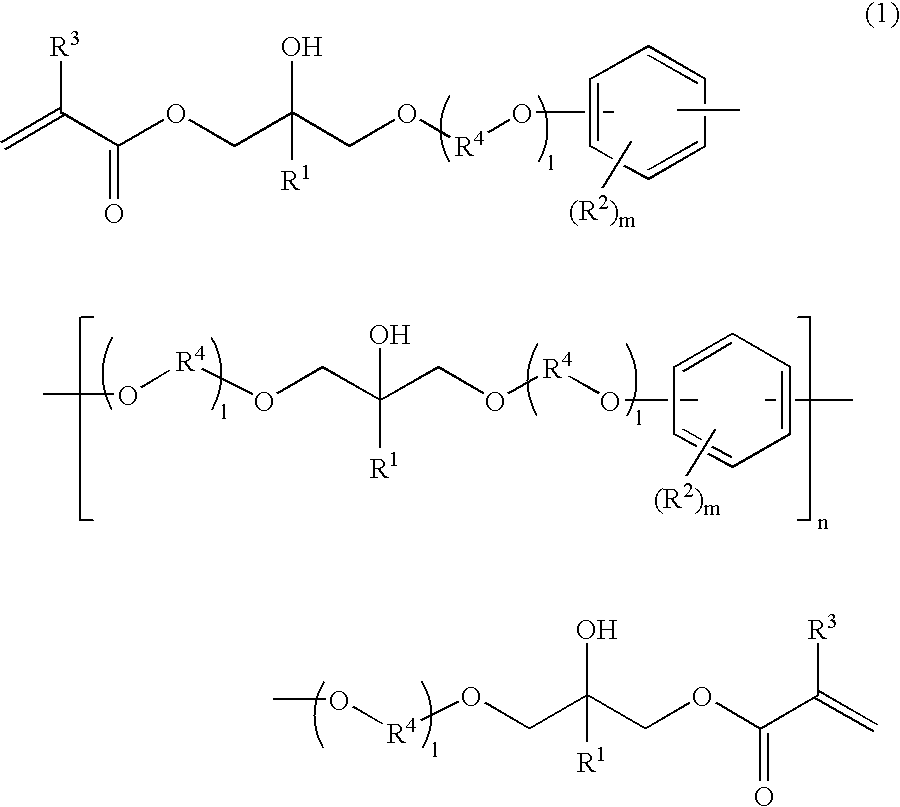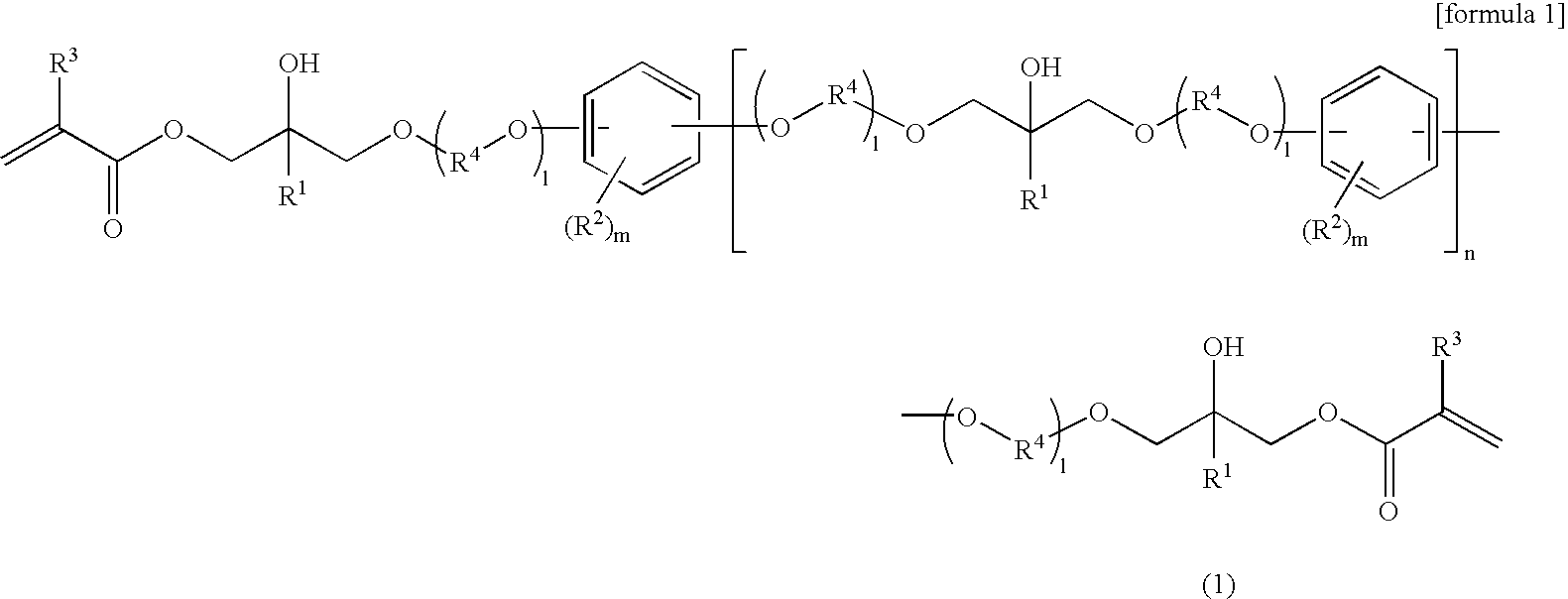Radiation Curable Resin, Liquid Crystal Sealing Material, and Liquid Crystal Display Cell Using Same
- Summary
- Abstract
- Description
- Claims
- Application Information
AI Technical Summary
Benefits of technology
Problems solved by technology
Method used
Image
Examples
synthesis example 1
[0071]Synthesis of epoxy acrylate of ethylene glycol added resorcin diglycidyl ether (Epoxyacrylate A): A compound of the general formula (2) wherein p=0, q=1 and bonding coordination of phenylene is at position m
[0072]Ethylene glycol added resorcin diglycidyl ether resin was dissolved in toluene, and added dibutylhydroxytoluene as the polymerization inhibitor therein, then temperature was risen up to 60° C. Thereafter, acrylic acid 100% equivalent to epoxy group was added, further temperature was risen up to 80° C., then trimethylammonium chloride as the reaction catalyst was added thereto and stirred at 98° C. for about 50 hours. Obtained reaction mixture was washed with water, and toluene was distilled out to obtain the desired epoxy acrylate of ethylene glycol added resorcin (Epoxyacrylate A).
synthesis example 2
Synthesis of Epoxy Acrylate of Resorcin Diglycidyl Ether (Epoxyacrylate B):
[0073]Resorcin diglycidyl ether resin was dissolved in toluene, and added dibutylhydroxy toluene as the polymerization inhibitor therein. Then temperature was risen up to 60° C. Thereafter, acrylic acid in 100% equivalent amount to epoxy group was added, and further temperature was risen up to 80° C., followed by adding trimethylammonium chloride as the reaction catalyst and stirring at 98° C. for about 50 hours. Obtained reaction mixture was washed with water, and toluene was distilled out to obtain epoxy acrylate of resorcin (Epoxyacrylate B).
synthesis example 3
Synthesis of Bisphenol F Epoxy Acrylate (Epoxyacrylate C):
[0074]Bisphenol F epoxy resin (Nihon Kayaku Co., Ltd. RE-404P, epoxy equivalent 160 g / eq., amount of hydrolysis 30 ppm) was dissolved in toluene, and added dibutylhydroxy toluene as the polymerization inhibitor therein, then temperature was risen up to 60° C. Thereafter, acrylic acid in 100% equivalent amount to epoxy group was added, further temperature was risen up to 80° C. Then trimethylammonium chloride as the reaction catalyst was added thereto, followed by stirring at 98° C. for about 50 hours. The resultant reaction mixture was washed with water, and toluene was distilled out to obtain epoxy acrylate of bisphenol F (Epoxyacrylate C).
PUM
| Property | Measurement | Unit |
|---|---|---|
| Temperature | aaaaa | aaaaa |
| Length | aaaaa | aaaaa |
| Fraction | aaaaa | aaaaa |
Abstract
Description
Claims
Application Information
 Login to View More
Login to View More - R&D
- Intellectual Property
- Life Sciences
- Materials
- Tech Scout
- Unparalleled Data Quality
- Higher Quality Content
- 60% Fewer Hallucinations
Browse by: Latest US Patents, China's latest patents, Technical Efficacy Thesaurus, Application Domain, Technology Topic, Popular Technical Reports.
© 2025 PatSnap. All rights reserved.Legal|Privacy policy|Modern Slavery Act Transparency Statement|Sitemap|About US| Contact US: help@patsnap.com



